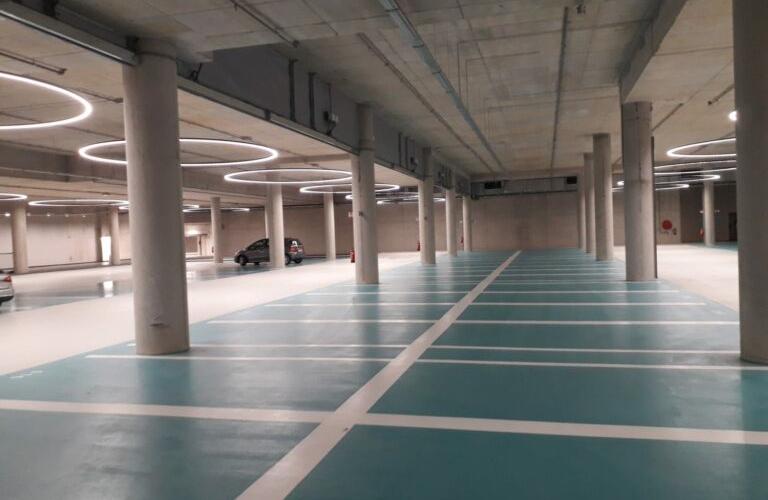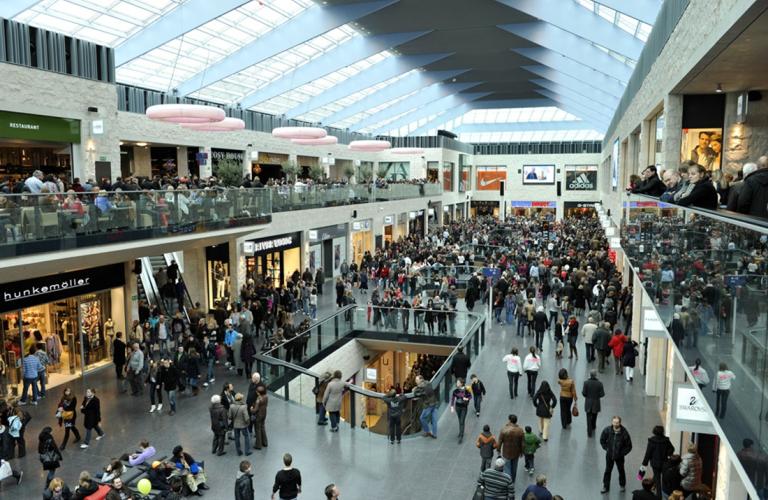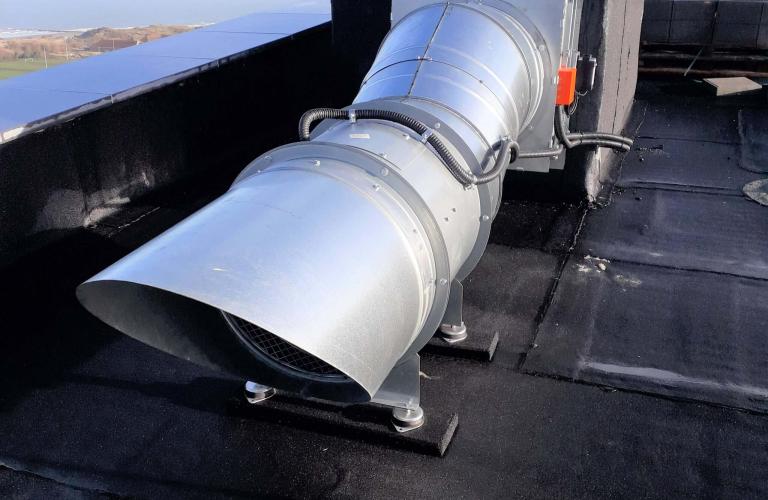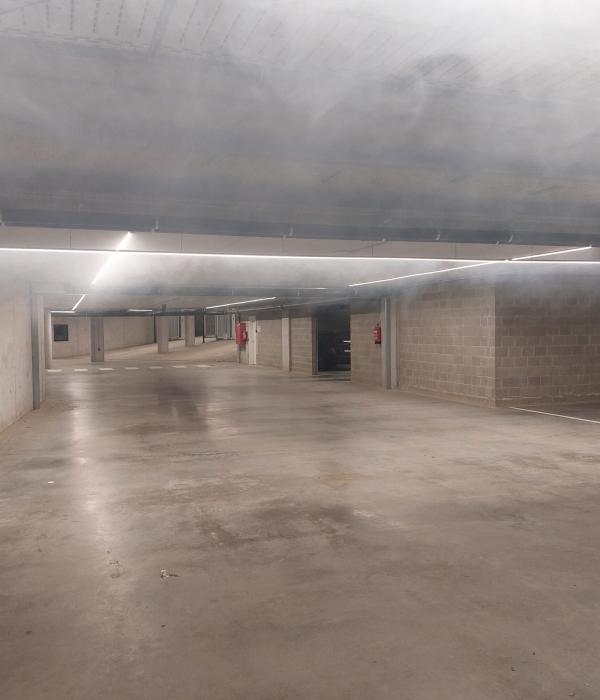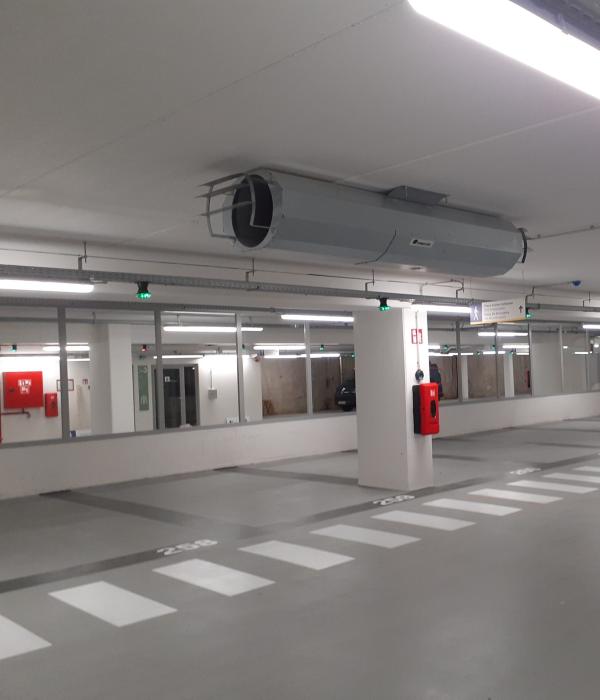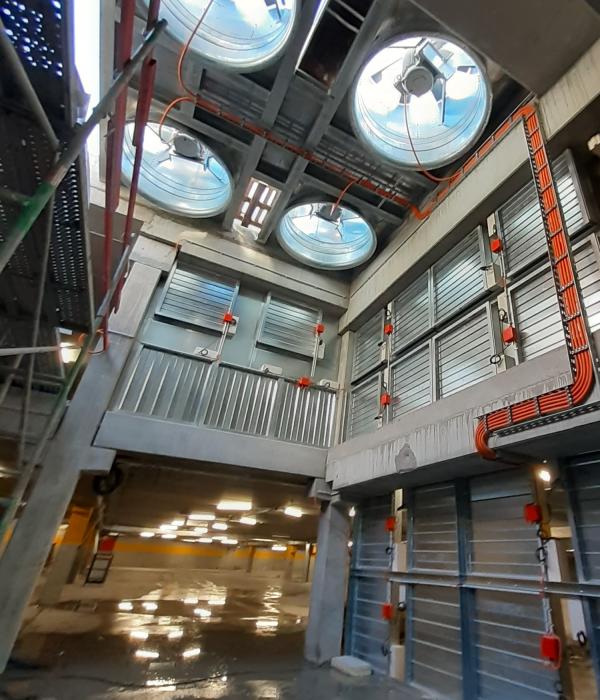Smoke and heat ventilation systems
SHVS’s remove smoke and heat generated in the event of a fire. Used in locations such as parking garages, they are activated automatically to mechanically extract smoke and heat through an arrangement of ventilators. The system also introduces fresh air in a natural way.
The goals of the ventilation system:
-
Ensuring the seat of the fire is accessible (creating a route) to enable fire-fighters to do their job.
-
Stopping the spread of smoke to limit smoke damage in the building.
-
Extracting heat to limit damage after a fire.
-
Creating and maintaining a pleasant air quality in the building (removing CO).
How the ventilation works
The ventilation system purifies the air in a garage in two ways:
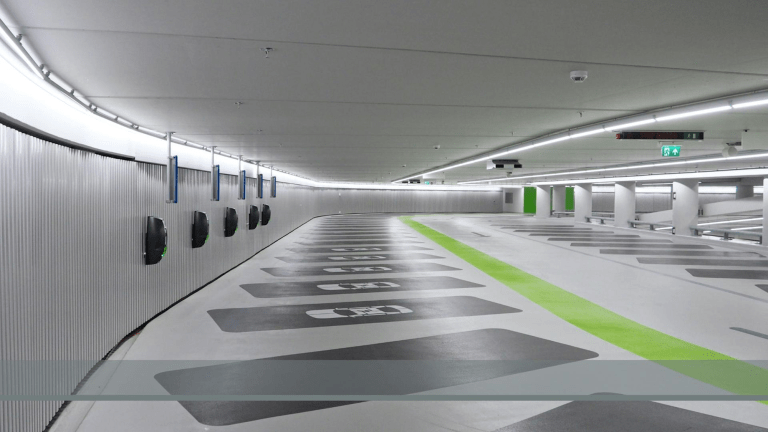
-
Daily ventilation linked to CO/NO₂ ventilation when CO/NO₂ emissions rise. Vehicles moving through a closed parking garage obviously emit CO/NO₂. The system ensures the air quality remains optimal throughout the garage, including all nooks and crannies. This requires the installation of a reliable CO/NO₂ detection system.
The ventilation is linked to CO/NO₂ detectors installed at height. If the CO/NO₂ ventilation is working at the highest flow rate (120ppm in a disaster situation) an alert will be transmitted via two displays.
-
Controlled smoke and heat ventilation in the event of a fire in the garage. Here the ventilation ensures that the appropriate volume of air (as stated in the standard) is directed over the smoke control opening(s) at a speed of at least 1.3m/s. Only the jet fans that are strictly needed to remove the smoke will be activated.
Smoke and heat ventilation will be activated in specific conditions, depending on when the fire is detected. This requires the installation of a reliable smoke detection system.
